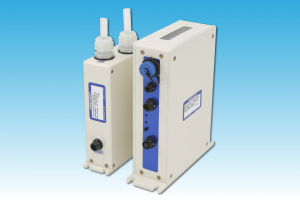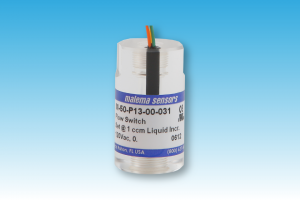

With so many different types of flow switches and flow meters on the market today, it can sometimes be difficult to select the most suitable product for your application. In this article, Fluid Controls takes a look at the features, differences and advantages of flow switches and flow meters.
When you’re selecting flow switches and flow meters, it’s useful to know the basics in order to make an informed choice. Let’s take a closer look at both types of flow measurement devices in more detail.
The main difference between a flow switch and a flow meter is how they function. Flow meters simply monitor flow rates and the user has to check the flow rate themselves, as and when rather than at a predetermined set point, to detect if there are any issues. Whereas flow switches detect the presence of the flow, at a predetermined set point, alert the user, and perform a designated action.
A flow switch is a mechanical instrument that is used to control the flow of air, steam or liquid. Flow switches work by sending trip signals to another device (a pump for example) within the system, telling it to shut off or to turn on, which will further protect it from damage and for cooling circuit protection.
Flow switches determine if flow is above or below a certain rate, known as a set point. The set point can either be adjustable or fixed, depending on the specification of the individual instrument. When the set point is reached, the response is often the actuation of an electric circuit. Once tripped, the flow switch stays in its new state until the fall falls below the set point.

Flow meters are devices used in fluid systems to measure linear, nonlinear, volumetric or mass flow rate of a liquid or a gas. They have many different applications and can be fitted with an integrated flow control valve to control output flow. When choosing a flow meter, it is important to consider a range of factors, including the familiarity of plant personnel, their experience with calibration and maintenance, spare parts availability, and average time between failure on site.
There are no standard, ‘off the shelf flow’ meters that are suitable for all applications. Selecting the correct device for your application requires writing a detailed specification that covers the use of the meter, taking into account the features of each meter type. This will help you to narrow down the critical specifications and select a corresponding product. Of course, Fluid Controls’ expert advisers can help with your decision making process.

Flow switches and flow meters are very reliable devices for determining flow rates. A couple of advantages worth mentioning are that they can be used for a number of different applications, including industrial and biomedical to name but a few. Flow switches also offer versatility, economy and accuracy. Some switches can be used to actuate audible or visual alarms, as well as relays or other controls.
Like flow switches, flow meters have a number of advantages in their favour. Firstly, they can give you a true mass flow measurement and very high accuracy readings. They are also unaffected by pressure, temperature and viscosity with self-draining characteristics.
Fluid Controls can supply a complete range of flow switches, flow meters and excess flow valves. Malema’s range of flow switches, flow meters and excess flow valves are recognised by the leading certifying bodies around the world. Widely used in industries ranging from offshore to semi-conductors, including harsh environments, their products are UL and ATEX approved as well as CE compliant. Available in a choice of materials, these units are suitable for almost all measuring and monitoring applications.
Speak to a Fluid Controls adviser today about our complete range of flow switches and flow meters by calling +44 (0) 118 970 2060 or email fluid@fluidcontrols.co.uk.